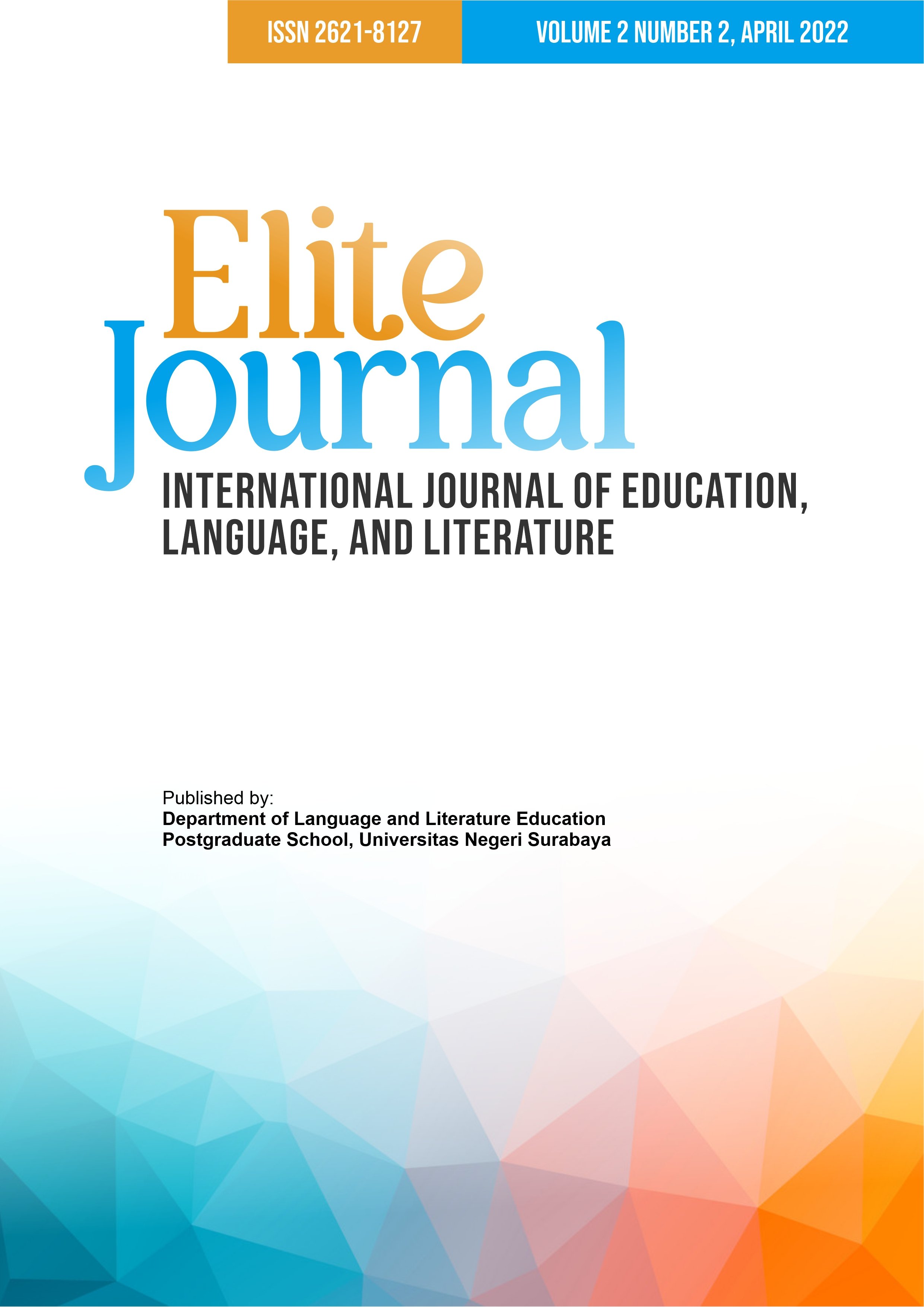IMPROVING STUDENTS' ABILITY IN SPEAKING OF PROCEDURAL TEXT WITH BALABOLKA ('TEXT TO SPEECH')
DOI:
https://doi.org/10.26740/elitejournal.v2n2.p73-78Keywords:
speaking skill, procedure text, senior high school, using text to speech, improvementAbstract
This classroom action research is an effort to describe the impact of using 'Balabolka Text to speech' to raise the students' skill to produce Oral Procedural Text, especially about the Manual and Tips. It is one of the solutions to rid of the difficulties of English teachers in handling the students' oral learning activity. A test was given to 36 students of Class XI in a senior high school in Sidoarjo that have already applied Balabolka Text to Speech to learn about the Manual and Tips of Procedural Text. The function of this application is to convert any written texts into audio files, which can be used to train the students' skills in speaking about the steps to demonstrate manual and tips. The prospective advantages of the qualitative approach show that the usage of Balabolka Text to Speech in the English classroom may increase the students' skills to understand the oral Manual and Tips of Procedural Text. It includes: (1) improving the students' ability to mention the communicative purpose, ingredients and/or tools, and the steps of performing it after using the application, (2) raising the students' speaking skills to comprehend the text by observing the effectivity of the application.
References
Alshenqeeti, H. (2018). Technology in the language classroom: How social media is changing the way EFL is taught. Arab World English Journal (AWEJ) Special Issue on CALL, 4. https://doi.org/10.31235/osf.io/crenm
Amelia, M. (2017). Utilizing Balabolka to enhance teaching listening. In Fifth International Seminar on English Language and Teaching (ISELT 2017) (pp. 40-43). Atlantis Press.
Brown, H. D. (2000). Principles of language learning and teaching (Vol. 57). New York: longman https://doi.org/10.2307/414380.
Febriyanti, E. R. (2011). Teaching speaking of English as a foreign language: problems and solutions. Jurnal Bahasa, Sastra, Dan Pembelajarannya, 1(2), 133-146.
Herawati, Y. W. (2016). Integrating character education and local genius through Balabolka in teaching listening. LINGUA, 11(1).
Dokumen Kurikulum: Daftar Nilai SMA Tahun 2015-2016
Stowell learning center. Retrieved from http://www.learningdisability.com/, Samonas Network.
Microsoft, software open source: Retrieved from http://www.cross-plus-a.com, Balabolka
Olshtain, E., & Celce-Murcia, M. (2016). Teaching language skills from a discourse perspective. In Handbook of Research in Second Language Teaching and Learning (pp. 144-158).
Road, McClellan. (2011). Alternate media for e-book readers: High tech center training unit. California: California Community Colleges.
Downloads
Published
How to Cite
Issue
Section
License
Copyright (c) 2022 Titis Pawiyati RP Pramono

This work is licensed under a Creative Commons Attribution 4.0 International License.
 Abstract views: 664
,
Abstract views: 664
, PDF Downloads: 668
PDF Downloads: 668





